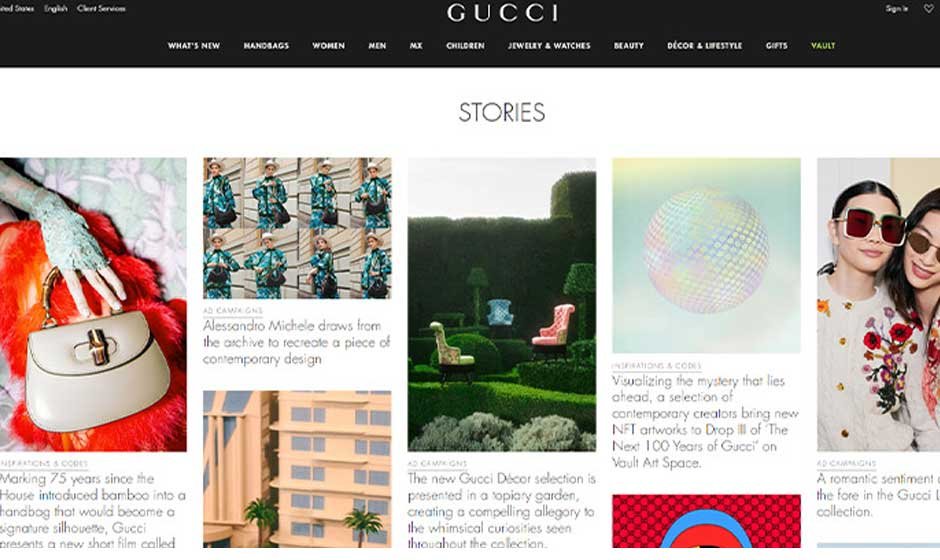Luxury marketing has always been a balancing act between aspiration and accessibility. It invites people to enter a world that feels rare, while still leaving the door open just wide enough for them to step through. The industry has been rewriting its own playbook in recent years, shifting away from blunt prestige and moving toward experiences that feel personal, almost intimate. It’s no longer enough to place a product in glossy pages or drape it across a red carpet. Luxury is being reshaped by digital sophistication, cultural awareness, and an insistence that exclusivity doesn’t mean detachment. Brands that once thrived on distance now understand the importance of connection. That’s the quiet but powerful transformation driving this new chapter.
The Digital Redesign of Luxury
The internet was once seen as too mass-market for luxury, a space where premium labels worried their identity might be diluted. That fear has been shelved. Today’s luxury consumer expects the same sleek digital touchpoints they encounter in other parts of their lives, and brands are investing heavily in making those experiences worthy of their reputations. A clunky or generic digital storefront undermines the very identity luxury houses spend decades building. That’s why there’s a surge of interest in website design services, with brands tailoring not just the aesthetics but the functionality. The browsing experience has to mirror the exclusivity of the brand, meaning every interaction needs to feel intentional, every scroll purposeful.
Beyond visuals, personalization is changing how luxury interacts online. Brands are layering data insights onto digital experiences so customers feel like the site already knows their taste before they’ve clicked twice. Whether it’s predictive styling, exclusive access to limited collections, or digital concierges who behave more like old-world personal shoppers, technology is becoming a stage for intimacy rather than just a checkout lane. The new luxury website isn’t just a place to buy, it’s a place to belong.
From Transaction to Transformation
Luxury purchases have always been about more than the product. A watch or a handbag was never just an accessory, it was a statement of identity. What’s changed is the degree to which brands are leaning into that truth. Marketing is less about pointing at a logo and more about crafting an aura around the experience of ownership. The narrative has shifted from “what this item says about you” to “how this brand makes you feel every time you interact with it.”
Consumers now seek transformation, not just acquisition. That’s why luxury houses are creating rituals around the purchase itself. Packaging feels ceremonial, boutique visits are choreographed with a sense of theater, and aftercare is reframed as an ongoing relationship. The product is still the centerpiece, but it’s wrapped in layers of storytelling that let buyers feel as if they’re stepping into something far bigger than a transaction. This is particularly visible in hospitality-inspired retail, where brands are blending the polish of a luxury store with the warmth of a boutique hotel. You don’t just walk in to buy, you arrive to experience.
The Shift From Scarcity to Story
Scarcity has always been part of luxury’s DNA. Limited runs, invite-only events, and seasonal drops keep demand fueled. But scarcity without story feels hollow in today’s market. Consumers want to understand not just how rare an item is, but why that rarity matters. The narrative behind a collection is just as important as its exclusivity.
Brands are leaning heavily on heritage, craftsmanship, and sustainability to give scarcity more dimension. If a handbag takes 40 hours of meticulous work from an artisan whose skills have been passed down through generations, the consumer feels connected to more than just a finished product. They’re buying into legacy. On the other side of the spectrum, if a brand emphasizes sustainability by limiting production, the scarcity aligns with values consumers care about. It becomes a symbol of conscientious consumption, not just exclusivity for its own sake.
The shift means marketing must weave narratives that humanize rarity. The emphasis is less on gatekeeping and more on showing how these objects and experiences carry meaning. Luxury storytelling has moved from whispering prestige to openly sharing purpose.
The New Face of Influence
Influencer marketing isn’t new, but the way luxury engages with it has evolved dramatically. In the early days of digital partnerships, brands were wary of diluting their identity by associating with too many voices. Now, carefully curated relationships are central to strategy. The difference is in the tone and authenticity of those partnerships.
Luxury marketing thrives when the influencer doesn’t look like they’re selling, but rather living the brand. The partnerships that resonate most are those that feel like an extension of identity rather than a contract. This is where agencies specializing in luxury carve out their edge. They know how to pair brands with tastemakers whose audiences crave authenticity. It’s no surprise we’re seeing the rise of firms that operate like PR agencies for fashion brands, skincare lines and everything in between. They’re less about blasting messages to the masses and more about orchestrating conversations with the right circles.
The key here isn’t reach, it’s resonance. A single post that feels like an intimate glimpse into a lifestyle can move the needle far more than a hundred scattered mentions. The future of luxury influence isn’t about saturation, it’s about selectivity.
The Return of Human Touch
Technology has unlocked personalization at scale, but paradoxically, it has also reminded consumers of the irreplaceable value of human touch. Luxury thrives on details that can’t be automated, whether that’s the way a store associate remembers a client’s favorite fragrance or the handwritten note that accompanies a delivery.
Brands are revisiting these old-world practices with fresh eyes. Instead of seeing them as outdated, they’re reimagining them as signature gestures that technology can never replicate. This doesn’t mean rejecting digital sophistication, but rather weaving in those human notes that transform an interaction into a memory. In a world where everything can be automated, the rarest luxury might simply be genuine human care.
This blending of old and new is where luxury feels most alive. The digital experience may draw someone in, but the personal touch keeps them loyal. That kind of consistency across touchpoints—digital, physical, and human—is what separates a luxury brand from a premium one.
Exclusivity Without Alienation
One of the challenges facing luxury marketing today is how to preserve exclusivity without sliding into alienation. Consumers want to feel invited, even if they can’t buy everything. The trick is balancing aspiration with inclusivity.
Brands are doing this by creating layered experiences. There are entry points where almost anyone can engage, from fragrance collections to digital storytelling campaigns, and then there are deeper levels of exclusivity for the loyal or high-spending clientele. This laddered approach lets brands cast a wider net without diluting their prestige. It keeps the dream alive for those still aspiring while rewarding those who are already invested.
Exclusivity works best when it feels earned rather than imposed. That means celebrating loyalty, personal style, and long-term engagement instead of just price tags. A consumer who has been part of the brand’s story for years may feel as valued as someone buying their first couture piece. That sense of belonging creates a community around luxury that transcends transactions.
At the End of the Day
Luxury marketing is rewriting its vocabulary, but the underlying message hasn’t changed. It’s still about rarity, beauty, and desire. What’s shifted is how those qualities are expressed. Instead of keeping consumers at a distance, brands are finding ways to bring them closer without losing the aura of exclusivity. They’re crafting stories that invite, digital spaces that feel intimate, and human touches that can’t be replicated by algorithms.
The result is a market that feels less like a pedestal and more like a carefully curated stage where both heritage and innovation play their parts. Luxury will always be about standing apart, but in today’s world, standing apart doesn’t mean standing alone.
















